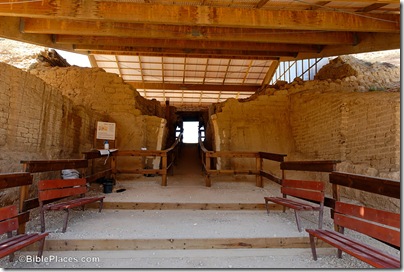A couple of developments in the land of the Philistines are worth noting:
A Philistine temple is being excavated at a site south of the five major Philistine cities. The temple dates to late Iron I (circa 1000 B.C.) and is a few miles south of biblical Gerar (Tel Haror) and northwest of Beersheba. Aren Maier has a brief report of his visit and some of the finds.
The Canaanite gate at Ashkelon has now been completely restored. They claim that it is the “oldest arched gate in the world,” but pushing the date of the Ashkelon gate a little earlier and the date of the Dan gate a little later. Even archaeologists are competitive! The JPost has a picture of the gate with a modern arch which looks like it was designed for schoolkids. Below is a photo before they added the arch.


